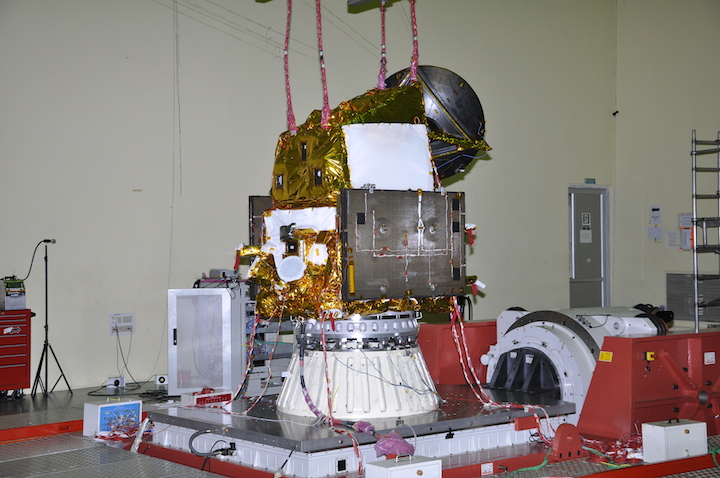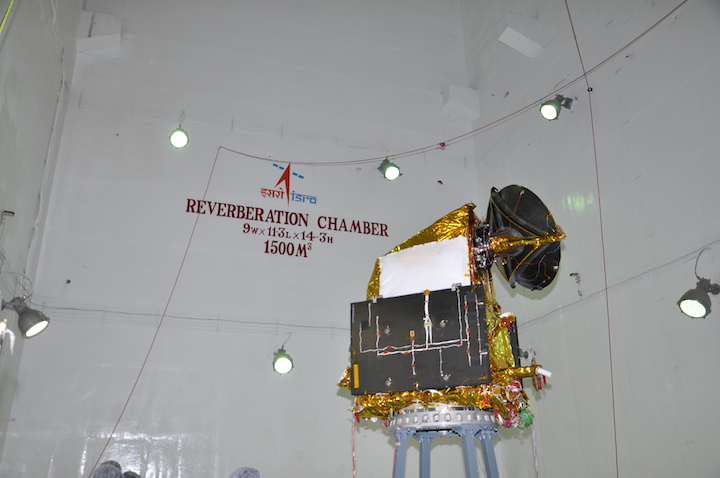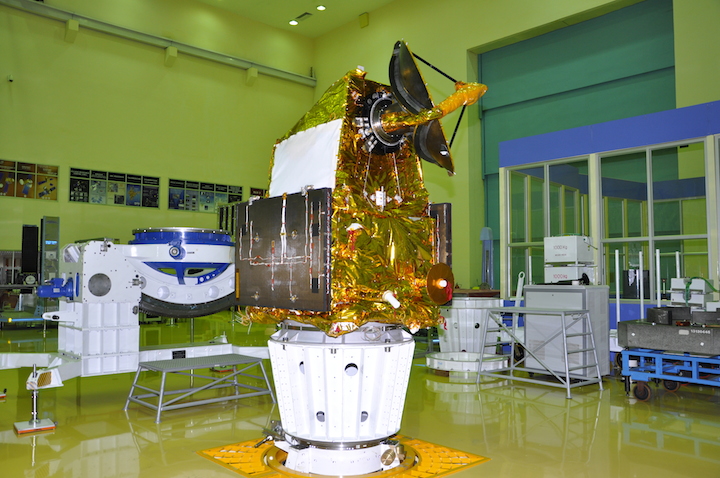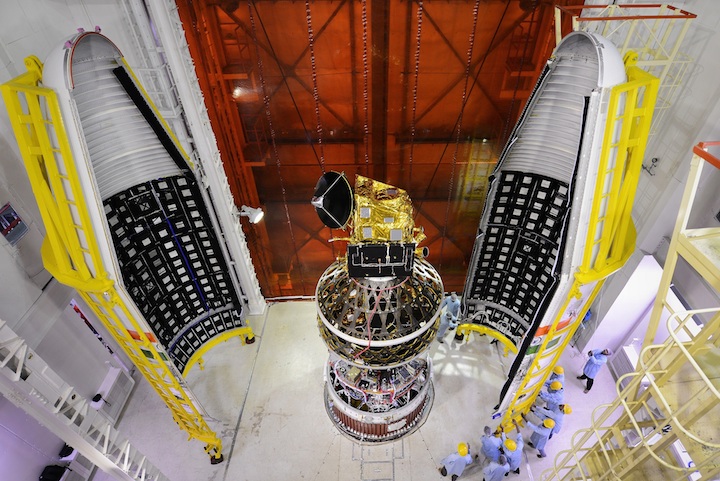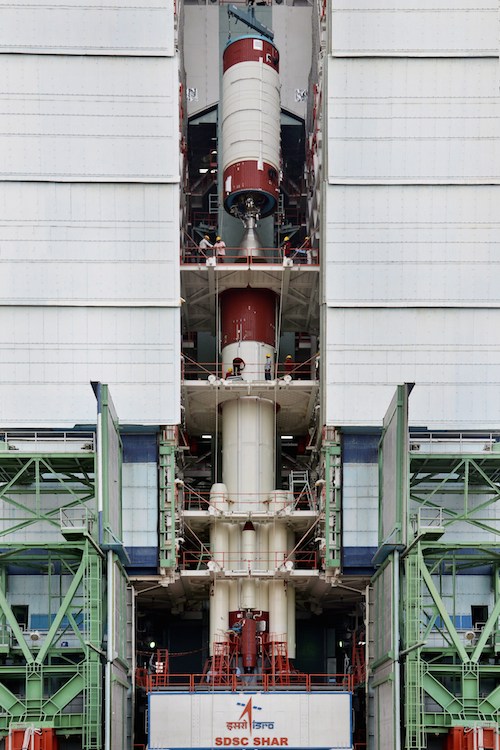The largest satellite onboard is the ScatSat-1. It will better India’s ability to forecast cyclones – but five years on, it could also become a piece of space-junk threatening other satellites.

A fully integrated PSLV C-34 outside the vehicle assembly building and ahead of its launch on June 22, 2016. The vehicle flew in the XL configuration. Credit: ISRO
At 9.12 am on September 26, the Indian Space Research Organisation will launch a Polar Satellite Launch Vehicle (PSLV) rocket on its 37th mission. The rocket will be carrying eight satellites, the biggest of which will be the ScatSat-1. Of the remaining seven, two have been built by university students in India while the rest are commercial payloads from Algeria, Canada and the US. The mission designation is C-35, and will be launched from the first launchpad at the Satish Dhawan Space Centre, Sriharikota.
Here’s what to look out for.
1. If successful, the launch will be the PSLV’s 33rd consecutive success
Before the September 26 launch: the PSLV has flown 36 missions (including developmental flights). Thirty-four have been successful – of which 32 have come consecutively. The last failure experienced by the rocket was in 1997, on its first operational flight.
Though this may seem like an impressive record, the PSLV has only the 16th best success rate. As of December 2015, it was 94%. The topper is the Delta 2: since 1989, it has aced 151 of 153 missions with 98 consecutive successes. Its success rate is 99%.
The C-35 mission will also be the 15th time the PSLV will launch in its XL configuration. The PSLV rocket has four stages: solid, liquid, solid, liquid. The first solid stage is one of the largest in use in the world, carrying 138 tonnes of hydroxyl-terminated polybutadiene urethane-bound propellant. It is augmented by six strap-on solid-fuel boosters. In the XL configuration, these boosters are larger than those on the standard configuration. All 15 XL launches have been successful.
2. This is PSLV’s first attempt to insert satellites into multiple orbits in the same launch

The third stage solid-fuel motor of the PSLV C-35 during vehicle assembly. Credit: ISRO
In the C-29 and C-34 missions, ISRO launched the respective payloads and then shut off the PSLV’s fourth stage motor. In this period, the rocket continued to orbit Earth from pole to pole. In between, the motor was restarted and shut off twice. On both occasions, it was for the rocket to move from a lower to higher or higher to lower orbit.
When these feats were attempted for the first time with the C-29 mission, ISRO had said that they would come of use during multi-orbit launches, specifically the C-35 mission. The moving-between-orbits can’t be performed by a PSLV’s fourth stage motor right out of the box because restarting an engine in a cold, low-gravity environment is tricky. As ISRO had said in a statement on June 22,
PS4 stage is powered by twin liquid engines, which demands maintenance of critical parameters within the limit for overall controllability during restart. In view of these constraints and the long mission duration of around 7600 seconds between two restarts at two widely spaced points in orbit, appropriate measures were taken with overall mission planning and management, augmentation of control requirements, manoeuvring and controlling the vehicle into different orbits, reconditioning of propulsion systems and propellant management under micro-gravity conditions.
Until ISRO had this ability – to switch orbits during a launch – it faced two problems.
The first was one of costs. If two satellites that could be accommodated onboard a single PSLV rocket were to be inserted into different orbits, ISRO has had to launch them separately in the past. Since the PSLV is an expendable launch vehicle, this also means building two launch vehicles. Each costs around Rs 100 crore.
The second is one of execution. During the C-34 mission, the PSLV deployed 20 satellites in one go into a Sun-synchronous orbit at an altitude of 505 km. After deployment, each satellite then used its built-in propulsion system to manoeuvre itself into its desired orbit. ISRO officials had said at the time that the vehicle had to constantly reorient itself to keep from launching one satellite into another. Now, if the vehicle is able to move between orbits during a mission, it can deploy multiple satellites with greater control and lesser risk.
During the C-35 mission, the PSLV will first deploy the ScatSat-1 at an altitude of 720 km (inclination 98º) some 17 minutes after launch. The remaining satellites will be deployed at 670 km (98.2º) almost two hours later.
3. The ScatSat-1 satellite will restore India’s ability to predict cyclones

ScatSat-1 being integrated with the PSLV C-35. The payload fairing is to either side. Credit: ISRO
The 377-kg ScatSat-1 is a weather-prediction satellite that will succeed the now-defunct Oceansat-2. The ‘scat’ in the satellite’s somewhat unfortunate name actually comes from the scatterometer it carries. A scatterometer is an instrument used to study atmospheric diffusion.
Using it, ScatSat-1 will study the incidence and behaviour of air vortices in the atmosphere, considered to be the seeds that evolve to become cyclones. Oceansat-2 was launched almost exactly five years ago (on September 23, 2009). It played an instrumental role in mitigating the effects of Cyclone Phailin on Andhra Pradesh and Odisha in 2013.
However, the scatterometer onboard Oceansat-2 went offline ahead of schedule in February 2014. Since then, we’ve been dependent on NASA’s RapidScat instrument onboard the International Space Station, which measures wind speed and direction over the oceans.
4. Mumbai’s first satellite? Yay! But there’s a problem.

A computer rendering of Pratham, a microsatellite built by the students of IIT-Bombay. Credit: iitb.ac.in
The satellite Pratham, built by students at IIT-Bombay, will launch onboard C-35 to an altitude of 670 km. There, it will enter into a Sun-synchronous orbit and study the ionosphere over four months. Some news reports have designated Pratham as “Mumbai’s first satellite” (even though it isn’t clear what it will be doing for the city specifically). Anyway, Pratham’s academic provenance is heartening.
The problem begins with what Pratham won’t be able to do but should have been able to: deorbit. Over time, Pratham will stop functioning as its battery runs out just as the drag exerted on it by Earth’s atmosphere will reduce. As a result, the satellite will effectively become a 10-kg hunk of junk descending toward Earth in a long and slow spiral, threatening hardware as well as space-walking astronauts in lower orbits along the way. The same is true of the 5-kg PISAT built by the students of PES University, Bengaluru.
According to NASA Spaceflight, the ISS “sports a number of battle scars” from “micro-meteoroid and orbital debris strikes”. In the event that NORAD is able to track a large piece of debris in the ISS’s path well in advance, the space station performs a debris avoidance manoeuvre to raise or lower its orbit by a few kilometres. This costs a lot of fuel. In the same vein, consider how the wider world would take it if something smashes into the beloved Hubble space telescope – or our own ASTROSAT.
The higher a satellite is beyond about 500 km, the exponentially longer it takes to descend low enough to start burning up. And 670 km is considered a high altitude for a satellite that needs to be in the low-Earth orbit. It needs to be noted at this point that ScatSat-1 also lacks a deorbiting mechanism. But at the same time, it also has a well-outlined mission objective that is more difficult to compromise on than the objective of a student-built satellite whose prime purpose is to educate the students who built it. Moreover, Pratham only has a lifetime of four months; ScatSat-1 is expected to function for five years.
If Pratham had had a deorbiting mechanism, it would’ve completed its mission and then shot itself toward Earth, burning itself up along the way without harming anyone or anything else.
The first student-built satellite from India that will have an experimental deorbiting mechanism is called Parikshit. It has been built at Manipal University and is currently undergoing tests. The mechanism in question is called electrodynamic tethering; the hope is that if Parikshit succeeds in demonstrating this tech, other university-sats will follow in incorporating it. According to an engineer involved with Parikshit, the team is targeting a December 2016 launch on board a PSLV rocket.
5. A healthy PSLV is instrumental to ISRO cashing in on the booming satellites industry
The commercial payload onboard the C-35 mission comprises the Algerian ALSAT 1B, 1N and 2B satellites; the American Pathfinder-1; and the Canadian CanX-7. Apart from them, the German Venta-1 and MaxValier satellite contracts are the ones remaining for ISRO to launch this year. Presumably, they will be launched onboard the C-36 mission (alongside the ResourceSat-2A and IITMSAT satellites) currently planned for October.
As of the C-34 mission, Antrix, the commercial arm of ISRO, had arranged for and executed the launch of 74 foreign satellites over 17 ISRO missions. In August 2016, PTI reported that, as a result, Antrix had made a profit of Rs 896 crore since 2011.
Commercial launches are important for ISRO and Antrix because… well, that’s what they’re banking on. ISRO is developing low-cost launchers not just for India’s needs because also to present itself as a low-cost launch option for foreign satellite-makers. According to a recent report, the satellite-manufacturing and -launching industry will grow at 4.95% a year from now until 2020. And the PSLV XL is one of the best in its class (see table; provided by Prateep Basu/Quora) when it comes to launching these satellites.
According to a 2015 report compiled by the US Federal Aviation Administration (FAA), there will be 26 payloads launched to the geosynchronous orbit, and 151 to other orbits, in 2017. The FAA also adds that the “satellite services market is generally robust”. The Satellite Industry Association estimated that revenues in the satellite manufacturing and services sectors grew by 4% from 2014 to 2015, reaching $16.6 billion and $127.4 billion respectively.
6. Pathfinder-1 is going up, and you should keep an eye on it. It’ll have one on you.

An artist’s rendering of a Kestrel Eye satellite. Credit: US Army
Pathfinder-1 is a satellite operated by BlackSky Global, an American startup that provides Earth-observation services. And it’s the first of a constellation of 60 satellites that will eventually form a network for “tracking economic assets, monitoring illegal maritime activity, providing humanitarian relief” and “securing troops and borders”, among other things, by 2019.
The Pathfinder network’s USP is how it will communicate. Most satellites in orbit around Earth communicate with ground stations using radio waves. When a satellite collects some information, it is encoded in radio-frequency waves and relayed to networks on the ground, which then distribute it. As a result, there is a significant delay between when an image is commissioned and when it is finally delivered.
The BlackSky Pathfinders, on the other hand, will use technology derived from the American military’s Kestrel Eye satellites to provide near-realtime reconnaissance capabilities.

A BlackSky Pathfinder satellite. Credit: SpaceFlight Inc.
This is achieved in two broad ways. First, in the legacy of Kestrel Eye, the Pathfinders will optimise data-processing and delivery such that an image is commissioned, captured, processed and downlinked in a span of 10 minutes. Second, the constellation will operate in a low-inclination (40-55º) Sun-synchronous orbit – allowing each satellite to pass over a spot on the ground up to six times a day, but never at the same time on different days. They will also be positioned at an altitude of about 450 km, allowing each satellite to be quickly brought down if it becomes obsolete and replaced with a newer version. BlackSky plans to do this once every three years.
The Pathfinders are being built by a company called SpaceFlight Inc. This company used to be called Andrews Space and had been contracted by the US Army Space and Missile Defence Command in 2013 to build the Kestrel Eye Block 2 satellite.
7. This is the fifth PSLV launch this year – en route to ISRO’s target of >12 launches every year
This year, at least one more launch remains (to hoist the German satellites) after the C-35 so ISRO can fulfil its contractual obligations. Compare this to the organisation’s future target: 12-18 launches a year, achieved using an ISRO-industry collaboration led by Antrix the specifics of which haven’t been finalised yet. To these ends, ISRO is building a second vehicle assembly building at its Sriharikota spaceport. ISRO officials have said that such a partnership is necessary to ensure the PSLV is able to lift more mass to space each year.
This graduation of the PSLV – from getting ready in the 1990s to establishing itself in the 2000s to finally becoming a symbol of ISRO’s progress in the 2010s – has only become possible thanks to its repeated successes and reliability. As a space entrepreneur recently remarked to this writer: “If you put something on the PSLV, you know it will reach orbit.” Ahead of the September 26 launch, too, the levels of apprehension are much lower than what they are ahead of every GSLV launch. And nothing less than one more perfect launch is expected from the PSLV.
Mission Readiness Review (MRR) committee and Launch Authorisation Board (LAB) have cleared the 48 and half hr countdown of PSLV-35/SCATSAT-1 Mission
Mission Readiness Review (MRR) committee and Launch Authorisation Board (LAB) have cleared the 48 and half hr countdown of PSLV-35/SCATSAT-1 Mission for Saturday, September 24, 2016 starting at 08:42hr IST and the launch of PSLV-C35 / SCATSAT-1 mission for Monday, September 26, 2016 at 09:12 hr IST
Quelle: ISRO
-
Update: 25.09.2016
.
Countdown for PSLV rocket's longest mission begins

IANS
Chennai, Sep 24 (IANS) The countdown for the launch of an Indian rocket with a weather and seven other satellites began on Saturday at rocket port Sriharikota in Andhra Pradesh, the Indian space agency said.
According to the Indian Space Research Organisation (ISRO), the countdown for the launch of the Polar Satellite Launch Vehicle (PSLV) began at 8.42 a.m.
This will be ISRO's longest PSLV satellite launch mission spread over two hours and fifteen minutes.
The 320 tonne PSLV rocket carrying eight satellites - three Indian and five foreign - will blast off from the first launch pad at Sriharikota on September 26 at 9.12 a.m.
The rocket's main cargo will be the 371 kg SCATSAT-1 for ocean and weather-related studies which will be placed into a 730 km polar sun synchronous orbit around 17 minutes into the flight.
According to ISRO, SCATSAT-1 is a continuity mission for Oceansat-2 scatterometer to provide wind vector data products for weather forecasting, cyclone detection and tracking services to the users.
The satellite carries Ku-band scatterometer similar to the one flown onboard Oceansat-2.
The mission life of the satellite is five years.
The five foreign satellites are: three from Algeria (Alsat-1B 103kg, Alsat-2B 117kg, Alsat-1N 7kg); and one each from Canada (NLS-19, 8kg) and the US (Pathfinder-44kg).
The two other Indian satellites are: Pratham (10kg) built by Indian Institute of Technology - Bombay and Pisat (5.25 kg) from PES University, Bengaluru and its consortium.
The seven satellites will be placed in a 689 km polar orbit.
This is the first mission of PSLV in which it will be launching its payloads into two different orbits.
According to ISRO after putting into orbit SCATSAT-1, the rocket's fourth stage or the engine will be shut down.
The fourth stage will be restarted and cut off one hour 22 minutes after the blast off twice.
Two hours and 11 minutes into the flight the fourth stage will be restarted. Four minutes later all the seven satellites would be put into their intended orbit.
The switching off and switching on of the rocket's fourth stage is called multiple burn technology which was first tested by ISRO while flying its PSLV rocket on December 16, 2015
Launching of multiple satellites with a single rocket is nothing new for ISRO and it has been doing that for several years. The challenge, however, is to launch several satellites at different orbits with one rocket, but the ISRO already did so successfully when the PSLV ejected six Singaporean satellites on December 16, 2015.
The PSLV rocket is a four stage/engine rocket powered by solid and liquid fuel alternatively.
"Restarting a rocket engine soon after it is shut off is a critical technology that has to be mastered. Once a rocket engine is activated, then the heat generated is very high. The trick is to cool it down in space and to restart it at a short gap," an industry expert told IANS.
"This is entirely different from switching on and off the communication satellite's engines in space. The interval between two restarts of a communication satellite engine will be in days. But in the case of restarting a rocket engine, the time gap will be in hours," the expert added.
"By that time the rocket's engine has to be cooled down. This part of the experiment is very critical," he explained.
Quelle: IANS
-
Update: 25.09.2016
-
PSLV-C35 / SCATSAT-1
PSLV-C35
India’s Polar Satellite Launch Vehicle, in its thirty-seventh flight (PSLV-C35), will launch the 371 kg SCATSAT-1 for ocean and weather related studies and seven co-passenger satellites into polar Sun Synchronous Orbit (SSO). Co-passenger satellites are from Algeria, Canada and USA as well as two satellites from Indian Universities/ Academic Institute.
SCATSAT-1 will be placed into a 730 km Polar SSO whereas; the two Universities/ Academic Institute Satellites and the five foreign satellites will be placed into a 689 km polar orbit. This is the first mission of PSLV in which it will be launching its payloads into two different orbits.
PSLV-C35 will be launched from the First Launch Pad (FLP) of Satish Dhawan Space Centre (SDSC) SHAR, Sriharikota. It will be the fifteenth flight of PSLV in ‘XL’ configuration (with the use of solid strap-on motors).
The PSLV-C35 is scheduled to be launched on Monday morning at 9:12 hrs (IST) on September 26, 2016 from SDSC SHAR , Sriharikota.
-
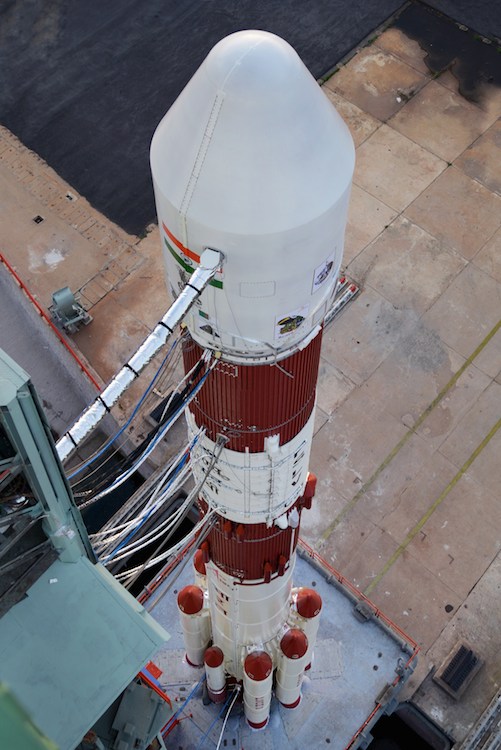
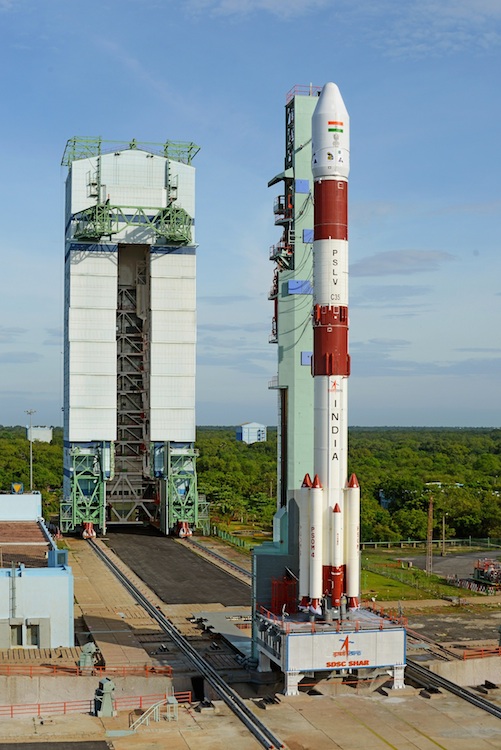
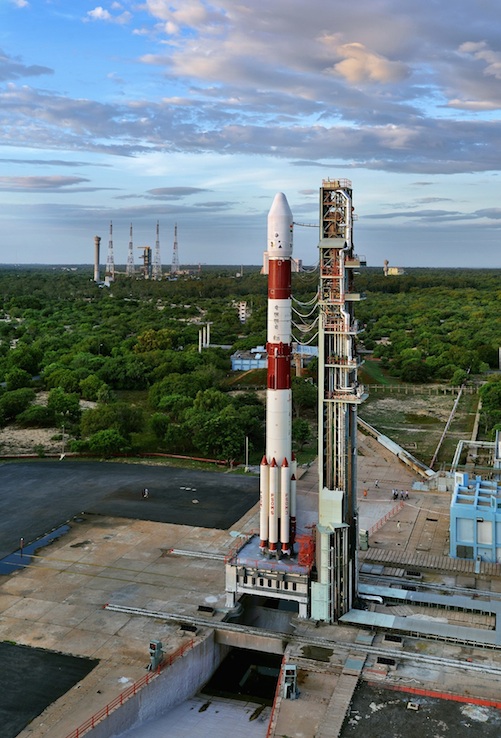
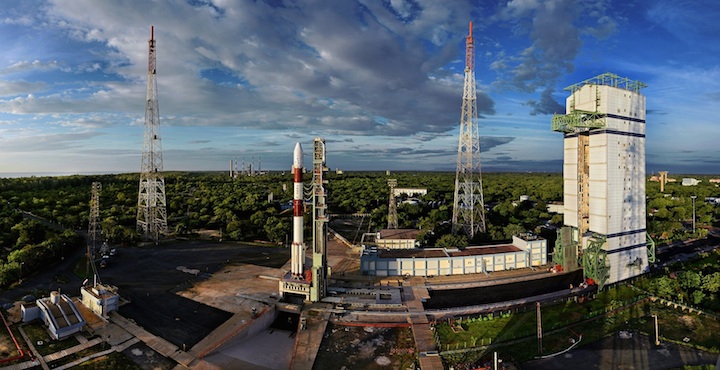
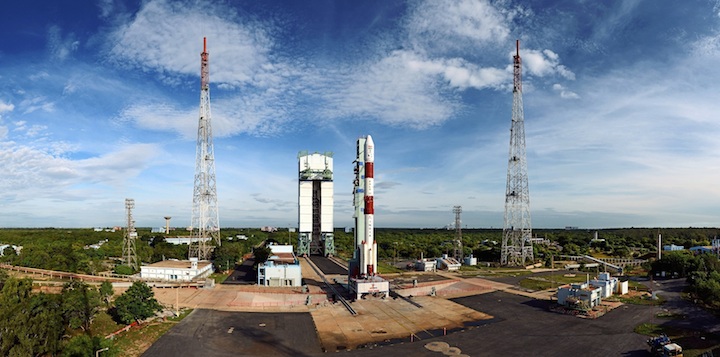
Quelle: ISRO
...
Update: 26.09.2016
.
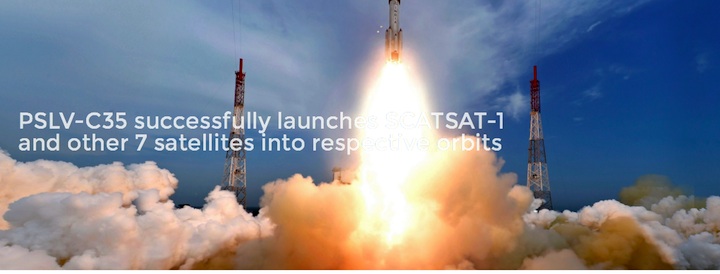
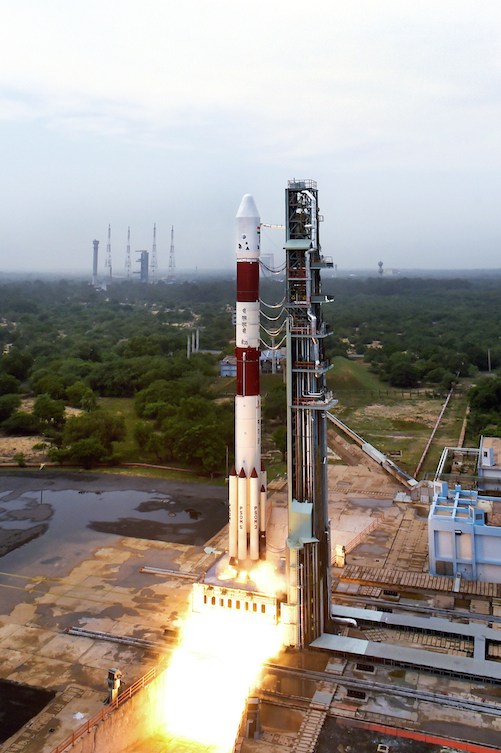
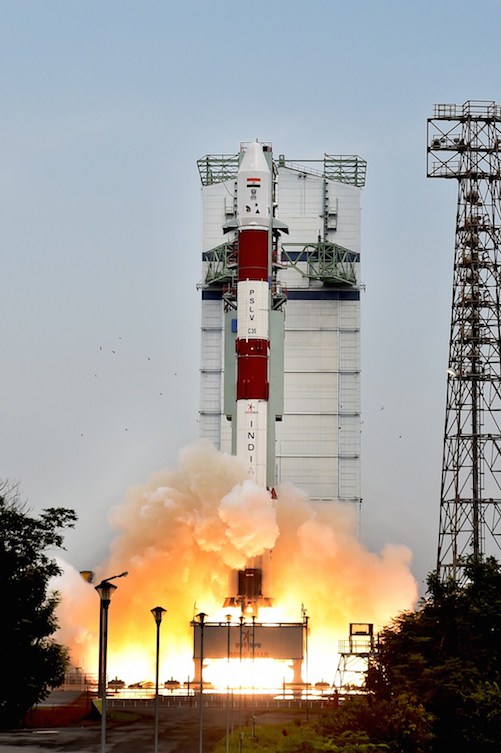
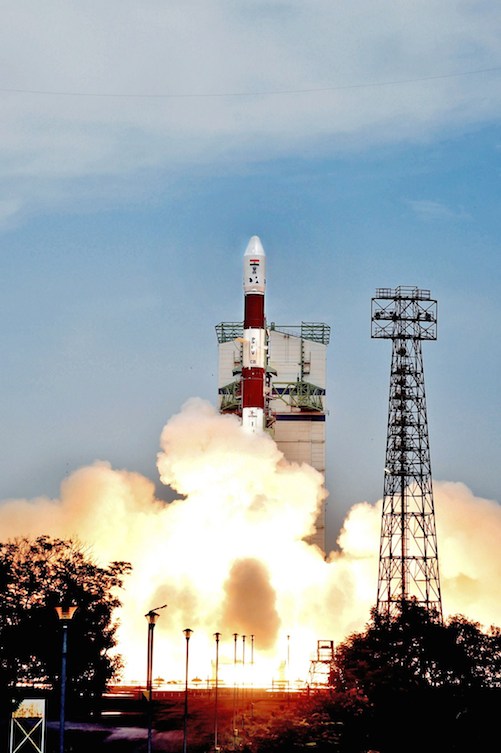
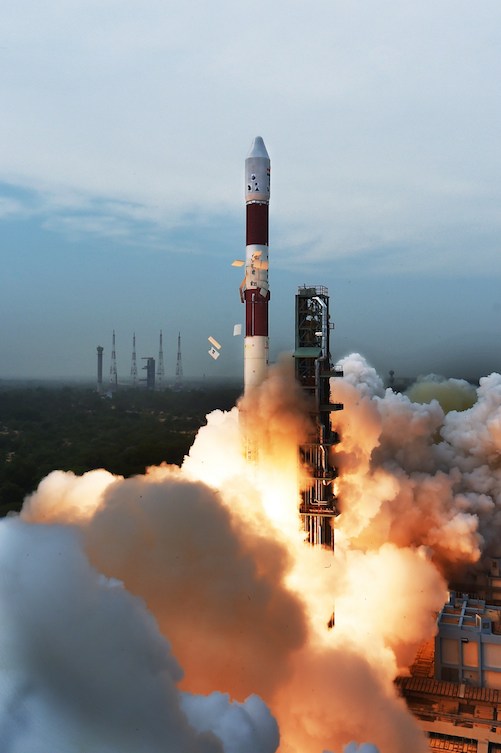
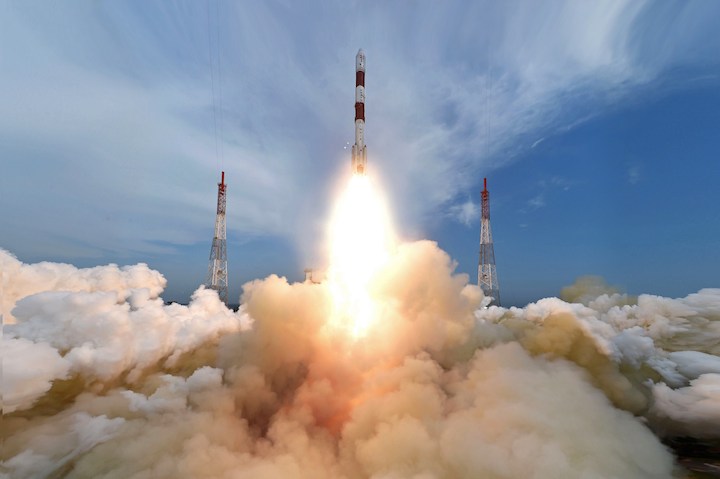
Quelle: ISRO
-
Launch-LIVE-Frams:
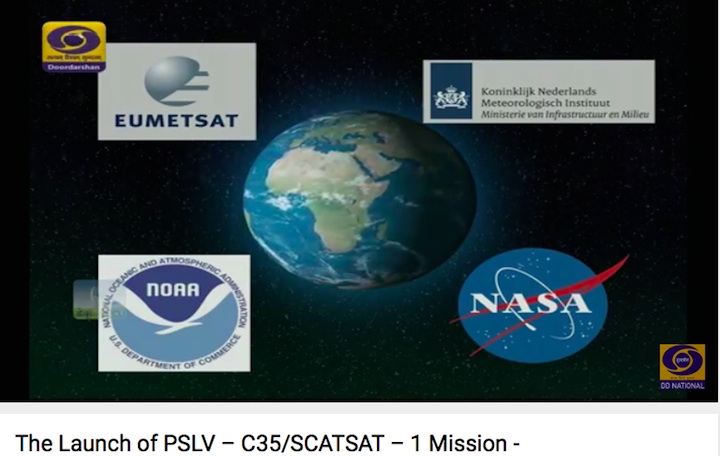
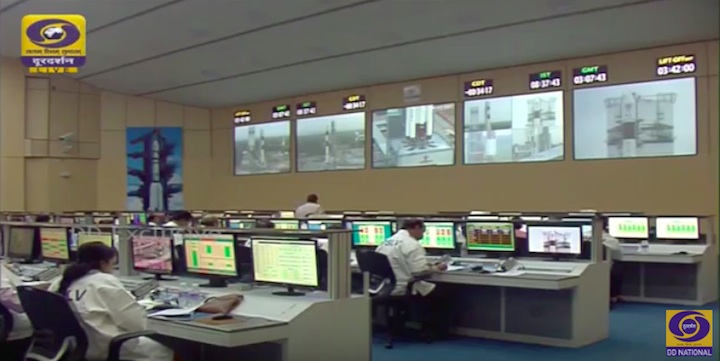
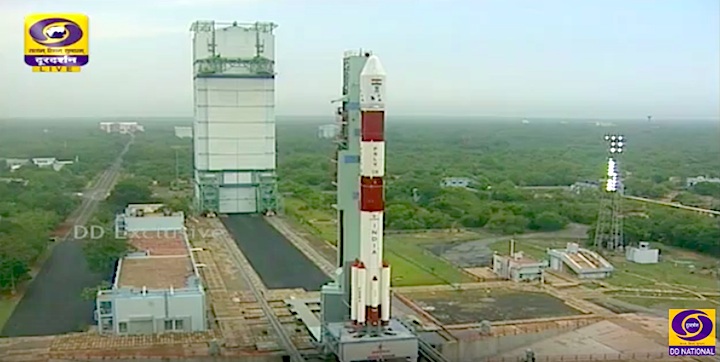
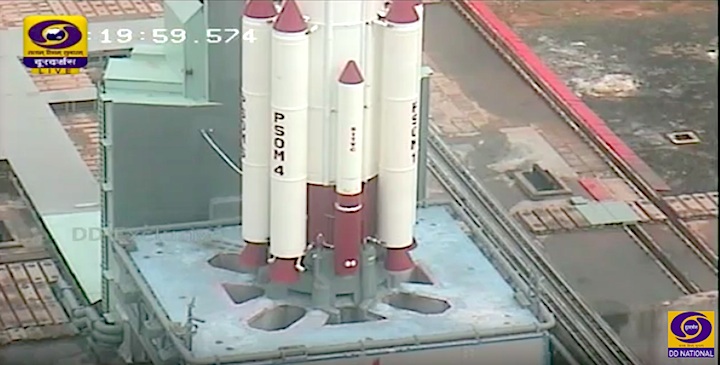
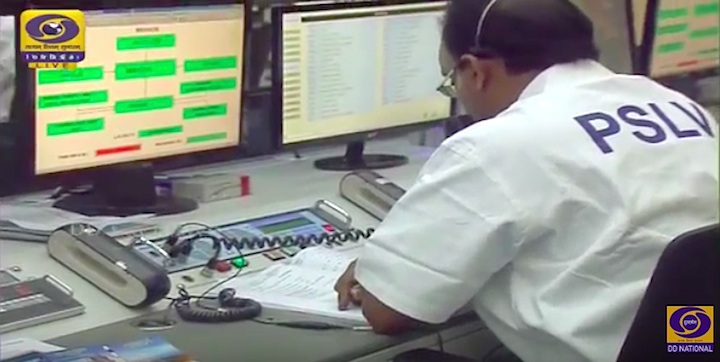


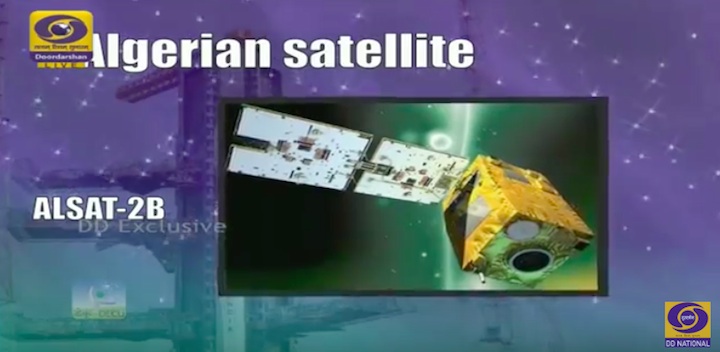
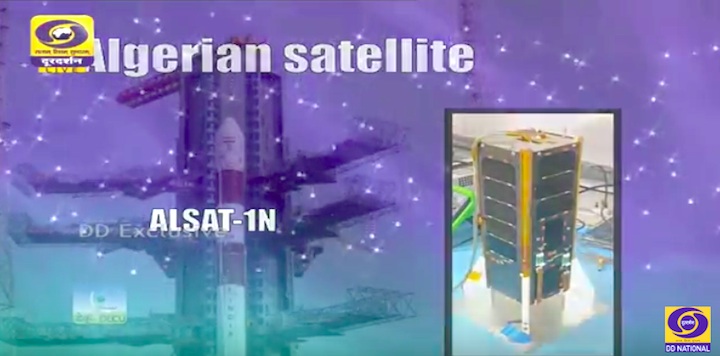
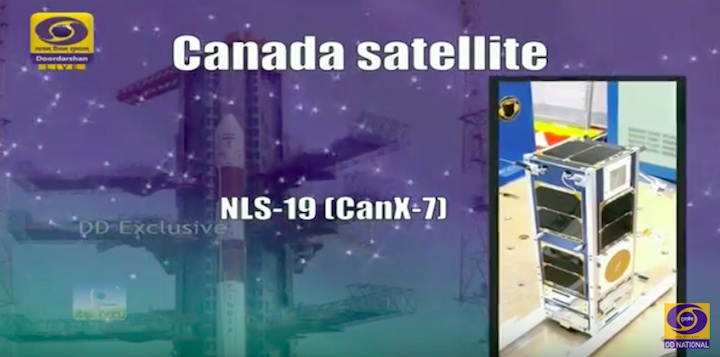
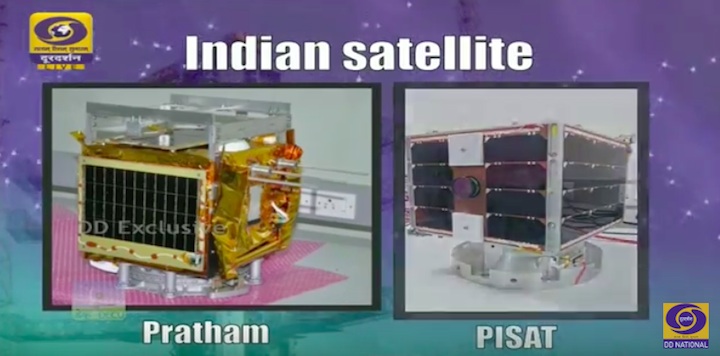
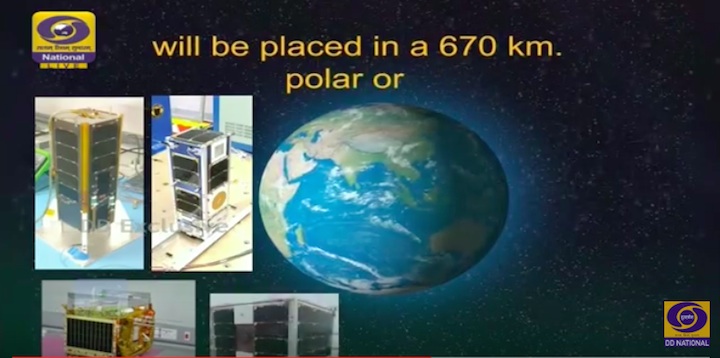
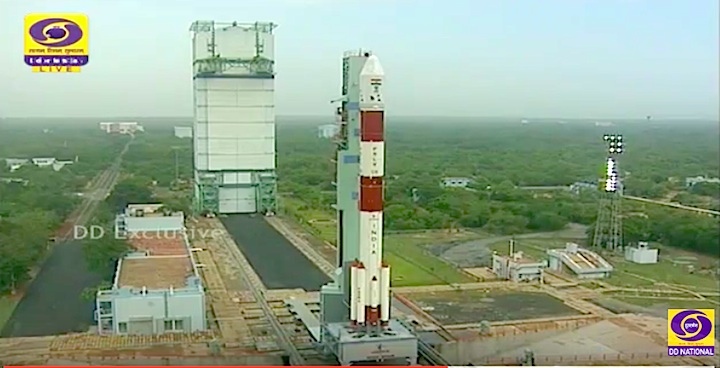
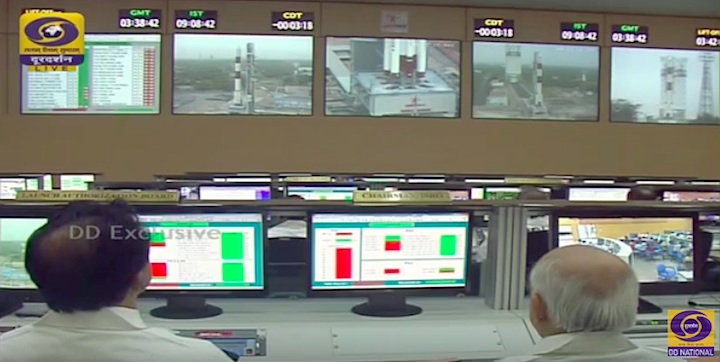
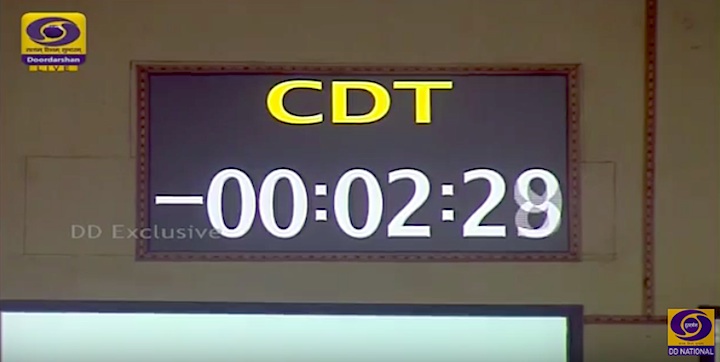
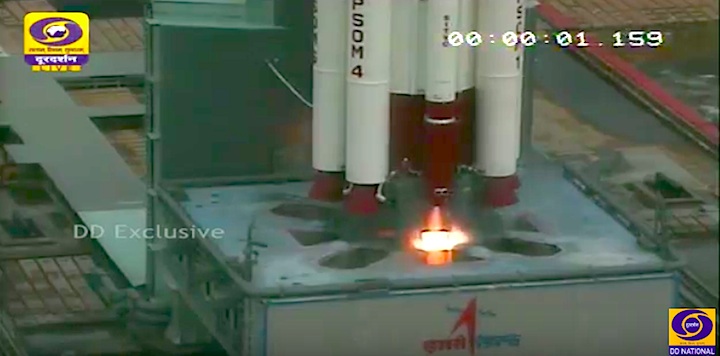
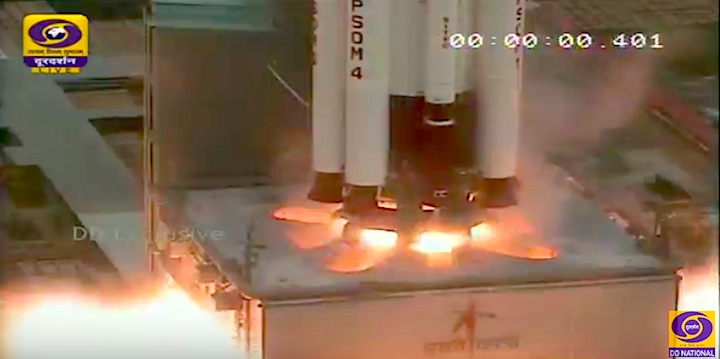

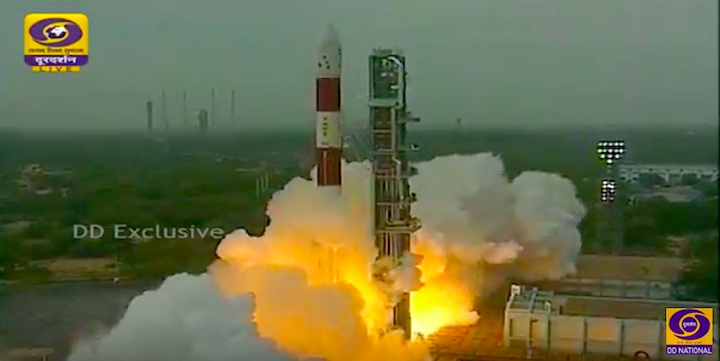
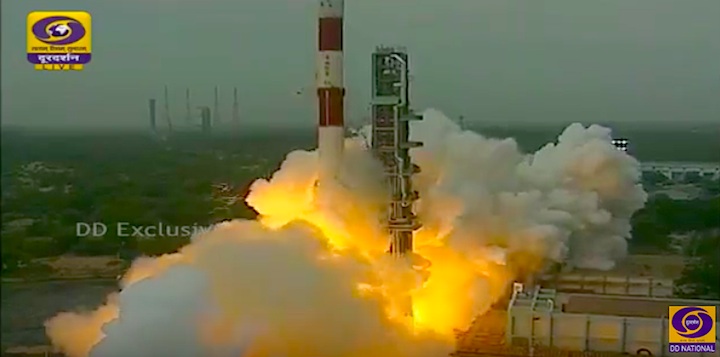
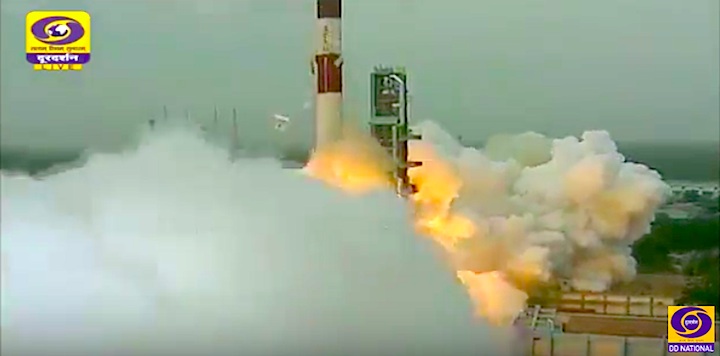
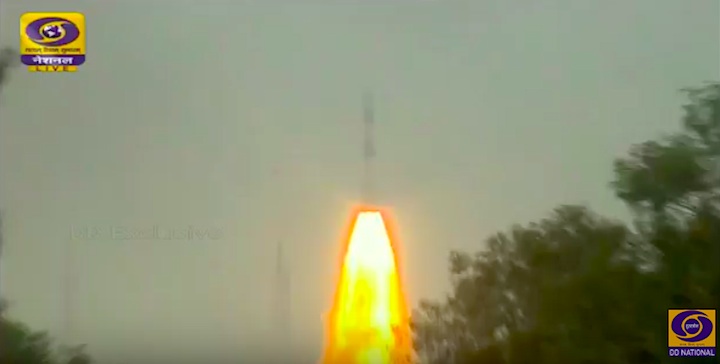
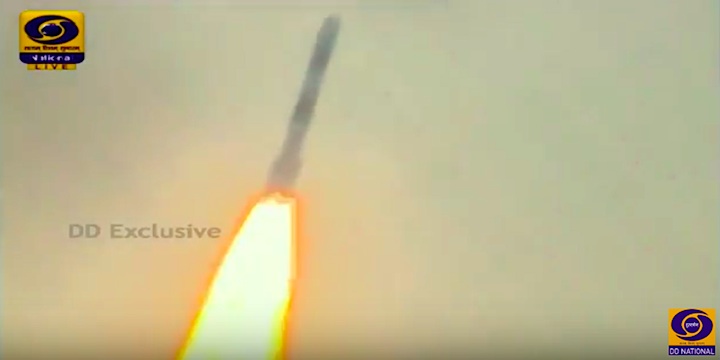
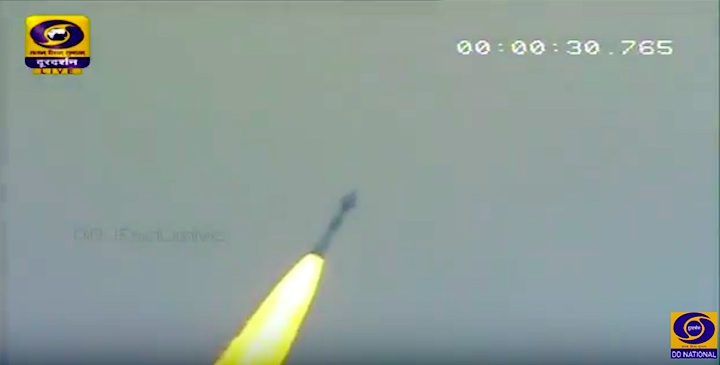
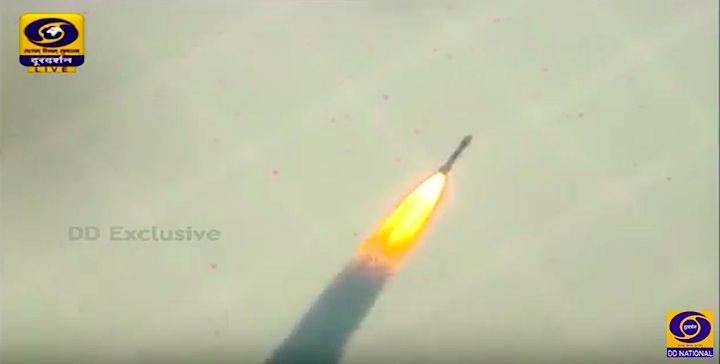
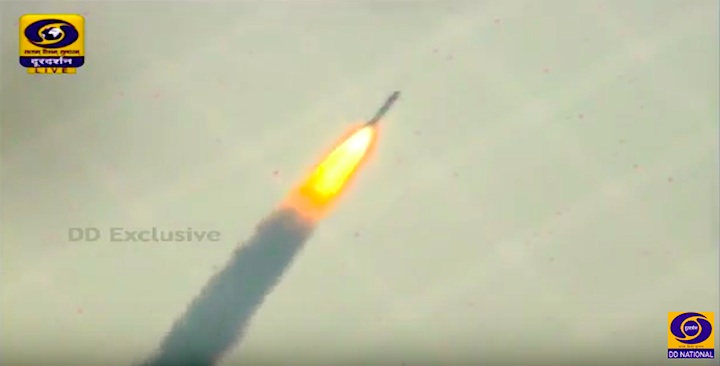
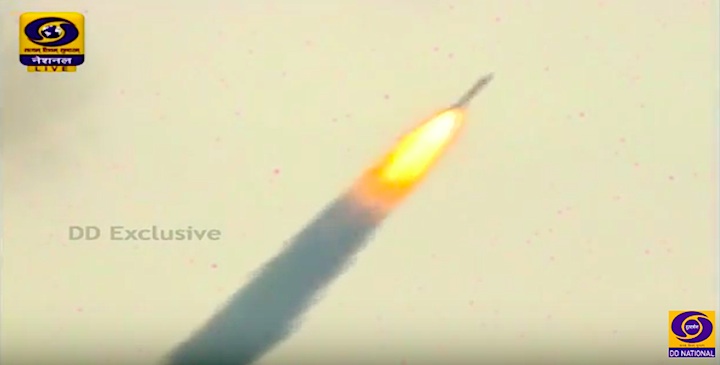

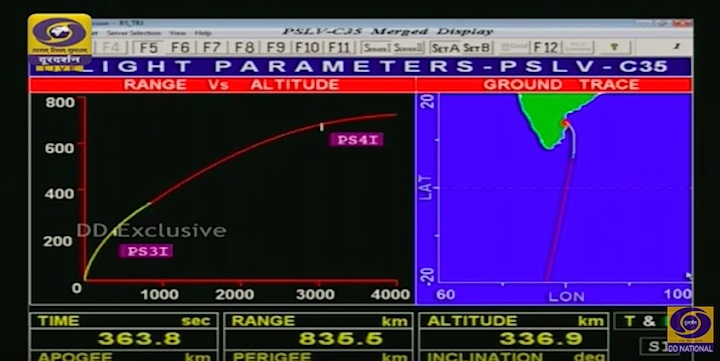
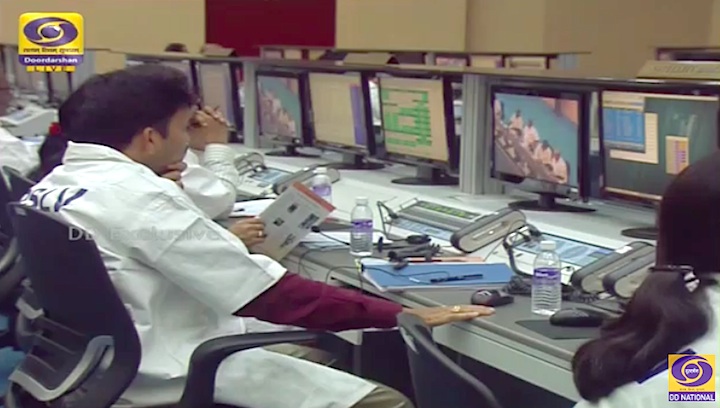
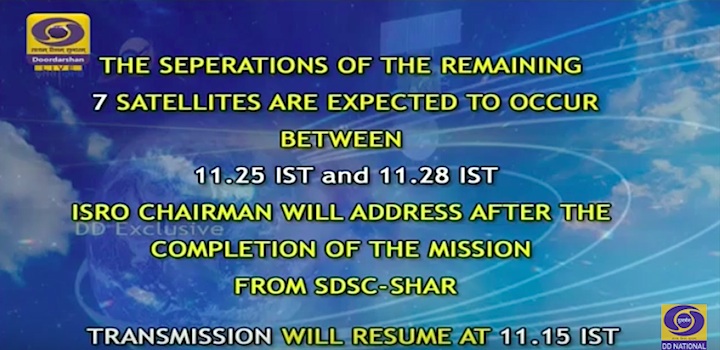
QUELLE. ISRO


